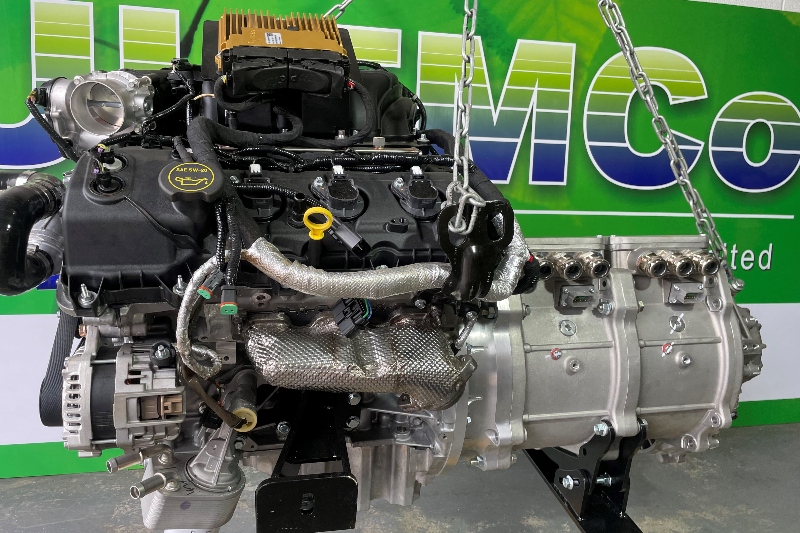Local authorities are looking to reduce the carbon footprints of their fleets. Amanda Lyne, managing director and co-founder of ULEMCo, argues that they should use hydrogen to power their vehicles.


Councils, with their fleets of utility vehicles, have an excellent opportunity to use hydrogen to replace conventional fuels, enabling the benefits of a reduced carbon footprint and cleaner air, while still having the full range capability of standard diesel vehicles.
The case for hydrogen here is more compelling than it would be for cars. Utility vehicles with back to base refuelling are not hampered by a lack of a hydrogen fuelling infrastructure. And the often high energy requirements of multifunction vehicles make pure electric vehicles almost impossible to imagine being practical. The fast refuelling of hydrogen vehicles further adds to the case for the use of this zero-carbon fuel.
Retrofitting of conventional trucks and other large mobile and static plant is now possible, and Liverpool-based ULEMCo has produced over 100 such vehicles using their dual-fuel technology, which although not zero emission, will deliver typical savings of 30-40% at the same time as improving air quality emissions.
While full zero-emission options like battery or fuel cell technology are still in their infancy, and are expensive, the economics of retrofitting trucks with dual-fuel makes more sense from an asset life perspective. CO2 emissions can start to be eliminated now, and it’s practical too, from an operational commitment perspective, since with a dual-fuel set up, the operator can still fall back to diesel if hydrogen is not available.
ULEMCo has commercialised its capability in hydrogen combustion engine technology. From a start converting Ford Transit vans to dual-fuel diesel/hydrogen, ULEMCo now uses its experience to convert commercial vehicles – from LGV to HGV and specialist utility vehicles – to run on hydrogen.
The company has developed a number of different approaches to enable hydrogen to play a role in clean mobility. In deployment is the innovative dual-fuel approach, allowing hydrogen to be mixed with diesel directly in a conventional engine. Hydrogen fuel can supply up to 70% of the energy delivered, depending on the vehicle and duty cycle, with a corresponding CO2 emission saving at the tailpipe. Since existing engine designs and vehicle platforms are used, this is a fast and cost-effective route to zero emission fleets.
Applications for this dual-fuel strategy include refuse trucks, sweepers, gritters, water bowsers and other specialist vehicles supplied to forward looking authorities such as Aberdeen and Glasgow city councils, and Oxfordshire County Council.
The company has started integrating the Toyota fuel cell unit as a base electric range extender. These work with electric drive systems, and use a fuel cell to convert hydrogen to electricity. The maturity of the technologies is important here, and the relative economic case too.
ULEMCo with its partners has developed the world’s first purpose built zero emission emergency ambulance for London Ambulance Service, incorporating a hydrogen fuel cell in the powertrain, which can be refuelled quickly and is capable of up to a 300-mile range.
A study in Oxfordshire has found that zero emission battery electric fire tenders – in combination with hydrogen fuel cells and a minimum of 8kg of onboard hydrogen fuel storage – will meet all requirements for flexibility, emergency response and water pumping. Analysis of the energy requirements of fire appliances confirmed that 8kg of hydrogen with a Toyota Gen2 fuel cell range extender would be sufficient to provide range extension of a 220kW battery designed base vehicle. The combination of stored energy in the batteries and hydrogen fuel, which can be refuelled rapidly, are needed to ensure the rapid response requirements of the operation.
A second conclusion from the work was that this onboard energy strategy incorporating hydrogen fuel could be met within the existing vehicle design, with no compromise to the equipment installation, and therefore would speed up the potential deployment of zero emission vehicles in these types of application.
An even more revolutionary approach under development at ULEMCo allows conventional vehicle engines to be run on 100% hydrogen fuel, which with a bespoke design and whole vehicle system approach can be fully optimised to diesel equivalent, thermally efficient engines that have immeasurable NOx emissions. Good power levels are maintained, and tailpipe emissions are cut to almost zero.
Utility vehicles will now have several routes to normal operation and with zero emissions, and hydrogen is squarely part of the solution in these applications.
This article originally appeared in the summer issue of LAPV. You can subscribe to the magazine for free here.